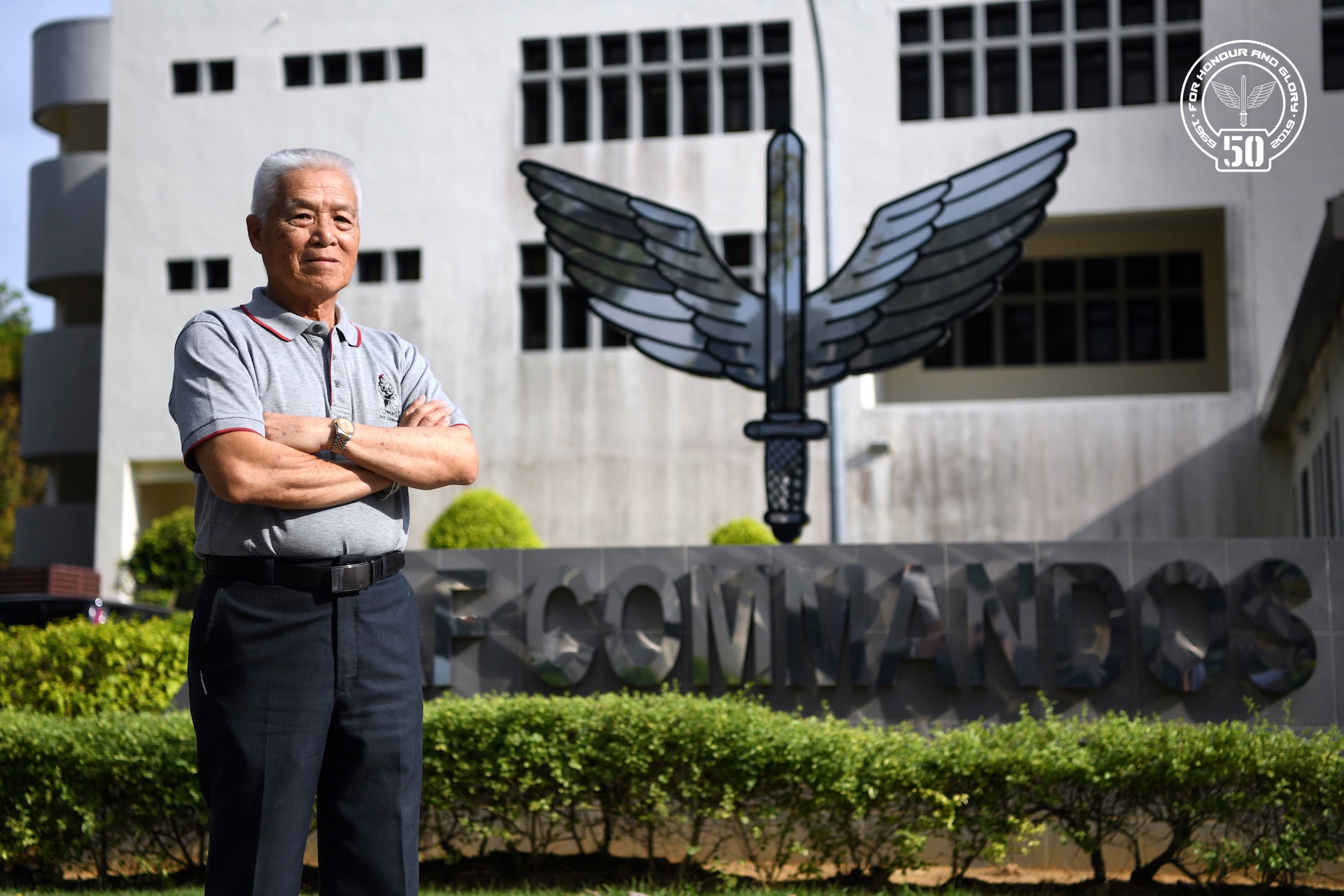FOUNDING FATHER OF THE COMMANDOS
TAKE A WALK BACK IN TIME WITH LIEUTENANT COLONEL (LTC) (RET) CLARENCE TAN – THE MAN CREDITED FOR ESTABLISHING THE SAF'S COMMANDO FORMATION – AND LEARN ABOUT THE JOURNEY OF THE RENOWNED RED BERETS.
On becoming the pioneer Commanding Officer (CO) of 1st Commando Battalion (1 Cdo Bn) and recruiting the first Commandos:
"In 1969, Director SAFTI (Singapore Armed Forces Training Institute) called all the young officers for a meeting, and said that a special unit would be set up to train elite personnel for special operations. The Formation Order was issued to start the Regular unit in December that year. And in 1970, I was posted in to be the CO.
Recruitment back then was very slow. They (soldiers in the SAF) were already Regulars, why would they want to join another Regular unit?
The only incentives I could offer them were that it would be an adventurous journey; there would be overseas training; and there would be allowances given.
In the beginning, about 10 officers and 20 NCOs (non-commissioned officers) volunteered to be in the unit. We put in place very stringent criteria for joining the unit, particularly physical fitness. By the end of (that first) year, we could only fill up less than a company’s strength."
On the early days of Commando training:
"In the initial stage of training, we did not have proper equipment – no bullet-proof vests or ballistic helmets. The weapons we used were the 9mm Browning pistol and 9mm Sterling submachine gun. To board aircraft, we used the bamboo ladder that signalmen used to climb to tie strings for the signals. It was very crude, but we made do with whatever we had.
We didn't do much of conventional training – we were training the men in special operations, raiding techniques, small boat operations and small unit operations. Even for jungle training, we dealt in small unit-type operations and reconnaissance.
After the Laju incident (in 1974 when a ferry was hijacked by four foreign terrorists in a bid to escape after setting off bombs at the Shell oil refinery), the Regular company was tasked to do anti-terrorist training, and to develop underwater capabilities.'
On setting up the SAF’s Parachute Training School in 1974:
"I believed we were capable of training our own airborne troopers. I was attending the Special Operations Forces course in Fort Bragg in the United States. So I got the blueprint from Fort Bragg on how to set up the towers (for parachute training), and we came back, and built an airborne school here."
On recruiting female riggers:
"We heard there were female riggers overseas – so we thought, why not? We recruited ladies to become riggers as well. But they had to join on the condition that they must all undergo the (Basic Airborne) course.
I told them: 'You pack the parachute for the soldiers – would they believe you're packing it right? So you must also jump.' In every course, at least one or two female riggers would take out the chute from the rack, and join the Commandos in the parachute jump. Some of them are still serving! That's how we got ladies into the unit."
On today's Commandos:
"I'm proud that they still keep up the tradition of the Commandos. They have kept up the standard of hard training and professionalism, and still maintain the core values of the Commandos."
Correction: 29 Nov 2019
An earlier version of this article incorrectly identified Warrant Officer (2) Soh Peng Seng in the photo.










